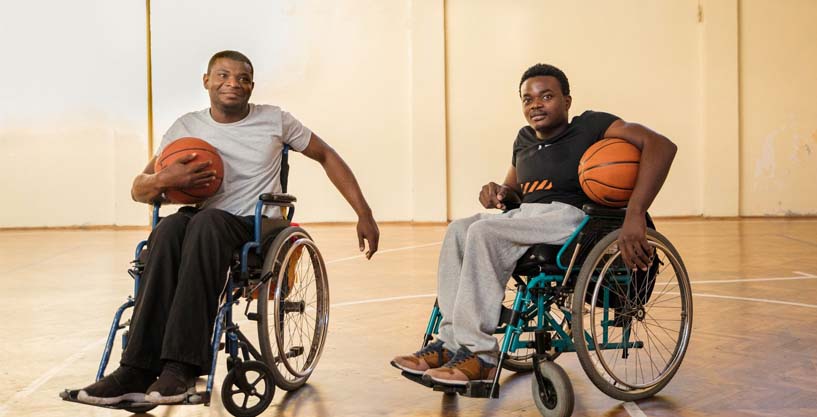Wheelchair Sports & Equipment List
You have your options when it comes to sports and exercise after a spinal cord injury. Explore some of the most popular wheelchair and non-wheelchair sports.
It may surprise you to learn that there are many different options for you to exercise and stay fit. Whether you want to compete in an individual or team sport as part of a league or local club, or you’re looking for something to keep you physically active and manage your weight – there’s plenty to choose from.

Popular wheelchair sports and activities to explore
After a spinal cord injury, there are still many forms of exercise that you can participate in to keep fit. Here is a snapshot of some of the more popular wheelchair sports, including some information on equipment.
| Sport or Activity Description | Recommended Equipment |
|---|---|
| Wheelchair Basketball: The oldest wheelchair sport is a great way to stay physically fit whilst participating in an intense team activity. | A standard wheelchair can be used, but you may want to use a special basketball wheelchair with a lighter and smaller frame. |
| Wheelchair Tennis: Two ball bounces allow you to hit more shots and boost your fitness on the court. | Serious tennis players use a more manoeuvrable wheelchair with wider wheels and a smaller frame. |
| Swimming: Swimming can give you a feeling of freedom that you can’t get with other forms of exercise due to buoyancy. | Facilities with a pool are required to have disability access equipment, so all you need are goggles and a swimsuit. |
| Wheelchair Cricket: This sport is an excellent physical and social activity since you participate in a team environment. | A compound rubber ball specifically designed for wheelchair cricket is used, along with a shorter cricket bat, and a specialty sports wheelchair is recommended. |
| Wheelchair racing: This popular sport has a long history at the Paralympics. Most major marathons or running races have a wheelchair division. | You don't need to use a custom racing wheelchair unless you plan on taking racing more seriously. Racing models feature ultra-light frames and aerodynamic wheels. |
| Sit skiing: This is an exhilarating sport that can boost coordination and upper body strength. | Special stabilisers and poles are used, depending on the slopes. Those with paraplegia and quadriplegia use a sit-ski, mono-ski or bi-ski. |
| Archery: This sport is a unique combination of mental focus, eye-hand coordination, and muscle control. | Visit your local archery range for the bows, arrows, and other necessary equipment you need. |
| Wheelchair hand bikes: You drive your wheelchair forward using a hand crank, which works your upper body. | You can buy an adapter kit to convert your current wheelchair. Upright or recumbent racing bikes are also a more advanced option. |
| Ice hockey: Some people call this “sledge hockey”. This sport increases stamina, strength, and coordination. | Players fly on the ice with two-skate blades, using two short hockey sticks with ice picks on the bottoms to propel forwards. Protective gear is also required. |
| Wheelchair Football: This highly demanding sport brings teamwork and individual performance together for a fun competition. | You can use either a manual sports wheelchair or something that is powered. |
| Wheelchair Rugby: For tetraplegics with a competitive spirit, wheelchair rugby is a great action-packed, highly physical sport. | Rugby requires a more stable, manoeuvrable wheelchair built to withstand a few collisions. You may also find that wheelchair rugby gloves help you improve your grip and push power while playing. |
| Scuba diving: Scuba diving can give you a sense of newfound mobility because of water weightlessness. | Standard scuba gear is required for everyone. Visit your local diving centre for help buying or renting equipment. |
